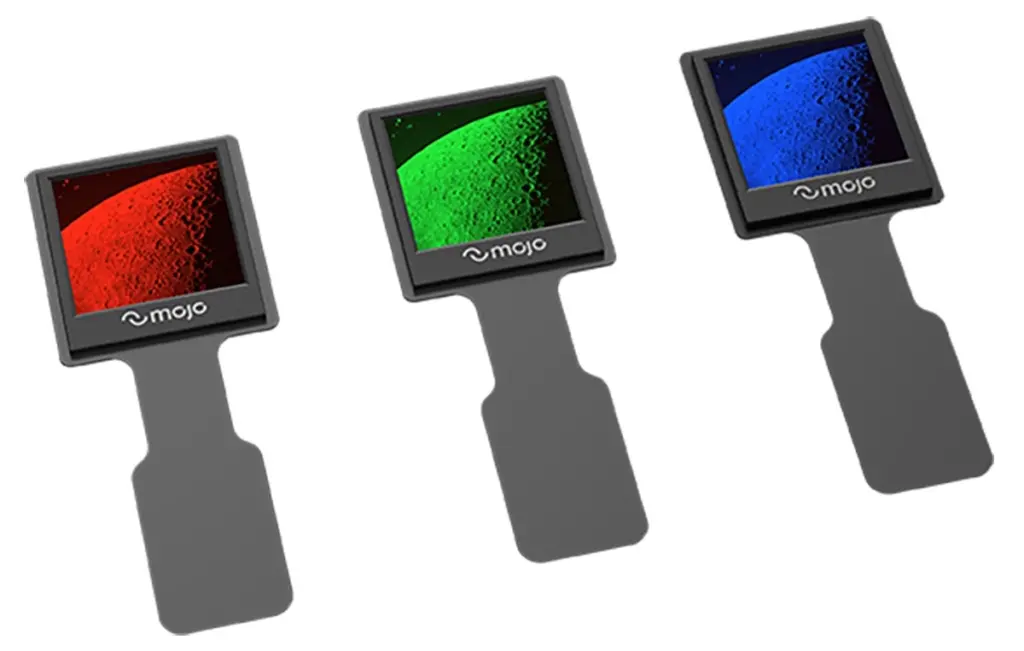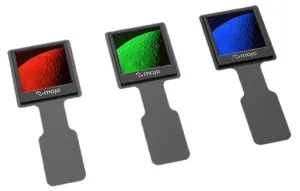Mojo Vision has unveiled a significant achievement in the sector with the world’s highest-density red MicroLED microdisplay. The achievement is marked by a density of 14,000 pixels per inch (ppi), pointing to significant progress in the development of full-color MicroLED displays. The company is set to apply their breakthrough in a new prototype designed for lightweight AR glasses. This follows Mojo Vision’s recent collaboration with DigiLens and the company achieving the first-ever light-up of a 300mm blue GaN-on-Silicon MicroLED array wafer.

Smaller MicroLEDs have been a challenge for the industry, especially those that use color conversion materials. However, Mojo Vision’s breakthrough sets a new standard, achieving true red vibrancy at a record-small pitch that surpasses past red wavelength records of 620 nanometers or more.
The high-density red MicroLED was realized using Mojo Vision’s proprietary quantum dot (QD) process. The new red MicroLEDs measure 1.37 um in diameter and are set on a 1.87um pitch, a significant advance in the vibrancy and efficiency of MicroLED displays, factors that are crucial to fulfilling the color requirements of the burgeoning augmented reality (AR) and extended reality (XR) markets.
Present display technologies, such as OLED, used in AR/VR headsets, often struggle to maintain optimal brightness and contrast in varying environmental light conditions. The commercial availability of MicroLEDs would alleviate these issues, offering rich functionality for AR and XR devices across a range of ambient conditions. Mojo Vision’s new red MicroLED has surpassed key industry challenges, including ultra-high pixel density, brightness, contrast, color gamut, and energy efficiency, setting a new precedent for other industry players.
But, it doesn’t stop there.
Talking to Dr. Nikhil Balram, CEO of Mojo Vision
We had a brief chat with the CEO of Mojo Vision, Dr. Nikhil Balram, about this latest development for the company. Dr. Balram was brought in to help lead Mojo Vision through its pivot away from a developer of AR contact lenses to a fully-fledged display manufacturer.
Dr. Balram was particularly excited to note that the company’s achievements with red MicroLED are a a progression from the work it has been doing to show the steps it is taking to accelerate out of last year’s pivot point with the aim of becoming a developer and supplier of MicroLED displays. Mojo Vision, in Dr. Balram’s belief, is now the leading startup in the field of MicroLED development, and has established a beachhead for itself in the marketplace.

In theory, Mojo Vision now has proven that it has all the components of a mass producible MicroLED solution, big wafers, and red, green and blue MicroLEDs. The next stage for the company is productization of the process. In our conversation, we touched on the subject of whether the AR/VR headset market are really a mass market opportunity. For Dr. Balram, the AR market has substantial potential because of the utility of AR for every day use. While VR headsets seem to get all the press, AR has greater application, and can be most easily integrated into every day workflows.
Dr. Balram also talked about the automotive market, particularly electric vehicles (EVs) and mobile devices, both of which are going to put power and energy efficiency at the top of their requirements. This is where MicroLEDs hold great promise and so, while the AR market is the low hanging fruit, it is a stepping stone to bigger markets where fractional savings in power can mean exponential demand for MicroLED devices, even though the cost of these devices may have a premium price compared to OLED displays.

